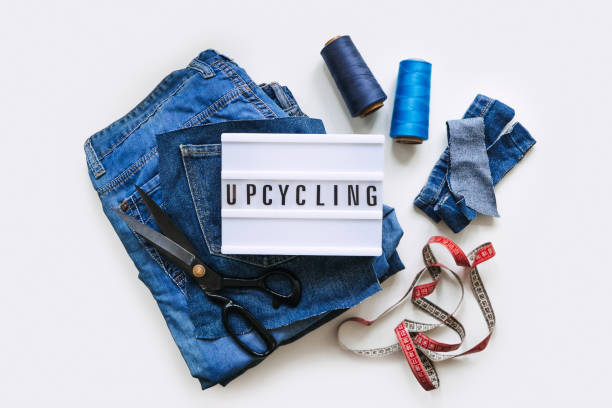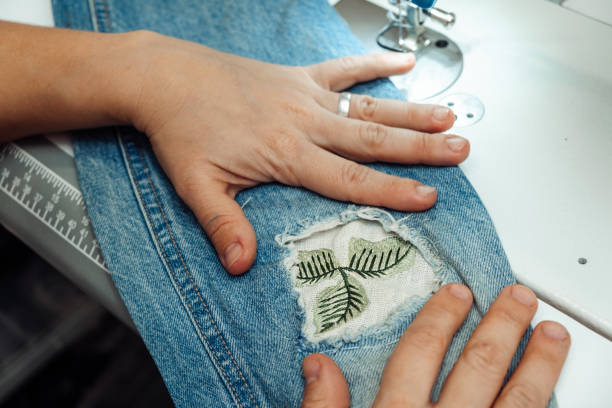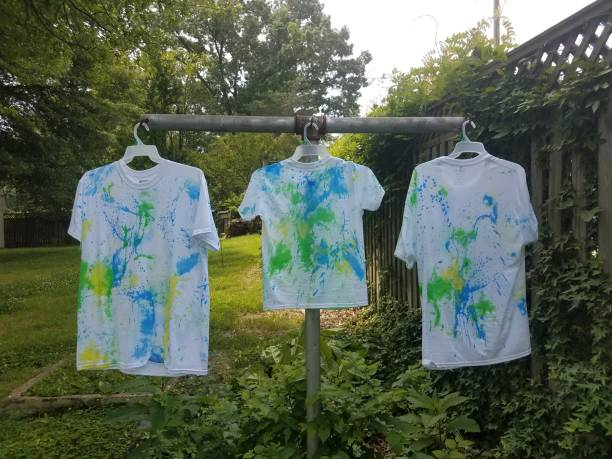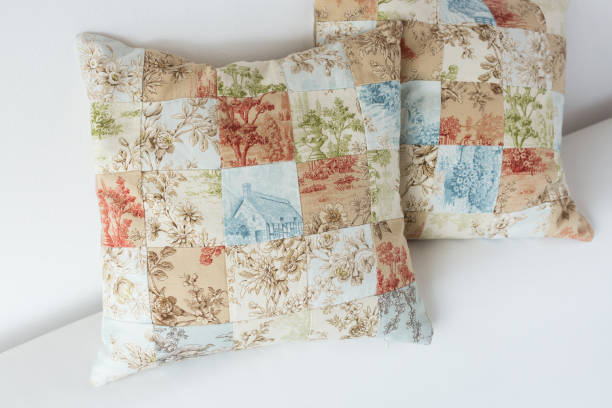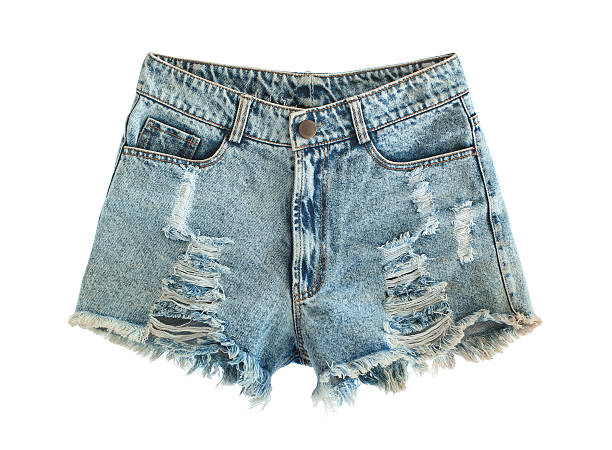Do you know you can transform your old clothes into something creative and unique rather than disposing of them?
Imagine turning your old jeans into a tote bag or your wedding dress into a simple gown that you can wear for a date.
That’s the power of upcycling. It’s the process of transforming clothing of a lesser quality into a fashion statement that not only reflects your unique style but also supports the circular economy. Upcycling empowers individuals to create stylish, sustainable clothing while making a significant contribution to environmental protection.
Welcome to the world of upcycled fashion, where creativity meets environmental responsibility. In this guide, we will explore the art of upcycling, showing you how to breathe new life into clothing, right from its raw state.
Join us on this fun project as we learn about upcycled fashion.
What Is Upcycling?
Upcycling is a creative and environmentally-friendly approach to breathing new life into old or discarded items, particularly in the context of clothing and household goods. It’s all about taking materials that might otherwise become waste and transforming them into something with a new purpose, often of higher quality or value. In essence, upcycling means finding creative ways to make the most of available resources and reduce waste.
One of the primary drivers of upcycling is the urgent need to address the growing problem of textile waste. Most textiles, including clothing, account for a significant portion of the waste material in landfills. Instead of letting old garments end up as discarded items, upcycling clothes offers a sustainable solution. By reusing materials like your old pair of jeans or t-shirts, you can make upcycled clothes with a fresh and unique twist.
The process of upcycling requires you to take these raw materials you no longer want and use creative techniques to transform them into something new. For example, rather than disposing of your old jeans, you can repurpose it into a stylish upcycled dress or skirt. You can also use your wedding dress as a circle skirt rather than keeping it hanging in your wardrobe. Upcycling is known as creative reuse because it encourages you to think outside the box and find inventive ways to give items a new lease on life.
Benefits of Upcycled Clothing
Upcycling has a lot of benefits to both the environment and individuals. Some of the benefits of upcycling include:
Environmental Conservation
Upcycling reduces the demand for new raw materials. By creating something new out of existing items, you conserve natural resources. In essence, you lessen the environmental strain associated with resource extraction and mass manufacturing.
Reduction of Textile Waste
In a world where clothing waste is a growing concern, upcycling provides a solution. Fast fashion and the disposable culture have led to an enormous amount of clothing ending up in landfills.
Upcycling directly addresses this problem by repurposing old clothing items into new, usable ones. It keeps textiles out of landfills, contributing to a more sustainable approach to fashion.
Greenhouse Gas Emissions Reduction
The recycling process, which upcycling is a part of, significantly reduces greenhouse gas emissions. This aids in the fight against climate change by decreasing carbon emissions associated with the manufacturing of new products.
Saves Cost
Upcycling allows you to save money. Instead of purchasing new items from clothing brands or a hardware store, you can create unique pieces from what you already have. This makes upcycling an economically sound choice.
Creation of Higher Value
Oftentimes, the final product of upcycling carries more value than the original. Upcycled items carry a story and history with them. When you upcycle an old t-shirt into a new fashion piece, you preserve the memories and experiences associated with that t-shirt. This emotional connection adds to the value of the item.
Promotion of Creativity
Upcycling encourages creativity and innovation. It challenges individuals to think outside the box and think of inventive ways to give old items a fresh life.
Eco-Friendly Practices
Upcycling is an eco-friendly practice that helps in reducing waste. Instead of creating new items from scratch, it repurposes existing materials, such as old clothing or discarded household items. By doing so, it conserves valuable natural resources and minimizes the environmental impact of resource extraction
Individual and Community Engagement
Upcycling projects can be fun and engaging activities for individuals and communities. They provide an opportunity for people to come together and work on projects that benefit the environment and local communities.
Ways to Upcycle Your Clothes
Upcycling clothing offers you a multitude of creative possibilities to breathe new life into your old garments while reducing textile waste. Here are some innovative ways to upcycle clothing:
Patchwork Creations: Instead of disposing of your jeans, jackets, or shirts, you can use scraps from old clothes to create patchwork designs on them. This adds a unique and artistic touch to your clothing.
Tie-Dye Revamp: Tie-dye is another unique way to breathe new life into plain garments. You can give your faded or stained clothing a new look with tie-dye. This creates colorful patterns and makes you look more stylish when you put it on.
Denim Shorts from Old Jeans: You can turn worn-out jeans into trendy denim shorts by customizing the length and adding embellishments for a fresh look.
Cut-Off T-Shirts: Your t-shirts can be transformed into tank tops or crop tops. For a personalized and stylish touch, you should consider adding fringes, lace, or fabric paint.
Repurpose Accessories: You can repurpose your old belts, scarves, or jewelry as embellishments for clothing. They add a touch of sophistication or uniqueness to your outfits.
Mending and Patches: Repair holes or tears in your clothing by adding decorative patches or creative stitching to it. This not only fixes the garment but also adds some creative touch to it.
Difference Between Upcycling and Recycling
Sometimes, people think upcycling and recycling are the same, but they aren’t. They are both sustainable practices that aim to reduce waste and benefit the environment, but they differ significantly in their approaches and outcomes. Here are the key differences between them:
Transformation Process
Upcycling involves taking an existing item or material in its current state and creatively transforming it into something of higher quality or value without breaking it down into its raw components. It focuses on reusing and enhancing existing items.
To recycle, on the other hand, involves breaking down waste materials into their raw components and then using these components to manufacture new products. It aims to create entirely new items from recycled materials.
Scope
Upcycling is typically more about individual or small-scale creative projects where items are repurposed for a specific use or aesthetic. It’s often hands-on and allows for more personal expression.
Recycling is a larger-scale manufacturing process that involves collecting, processing, and manufacturing on a mass scale. It is integrated into waste management systems and supply chains.
Materials Used
Upcycling can involve various materials, from old clothing to furniture to household items. It’s not limited to specific material types.
Recycling primarily focuses on specific materials such as paper, plastics, glass, metals, and textiles. These materials are processed into raw materials to be used in manufacturing.
Carbon Footprint
Upcycling tends to have a lower carbon footprint because it often requires fewer energy-intensive processes. It conserves resources by reusing existing items and reducing the need for new raw materials.
While recycling reduces waste and conserves resources, the process itself may involve energy-intensive activities like melting and reforming materials.
Plastic Bottles
Plastic bottles, when upcycled, can be turned into a wide range of products. For instance, they can become innovative storage solutions, decorative items, or even upcycled clothing accessories. This process typically involves altering the form and function of the bottles, giving them a new and creative purpose.
On the other hand, recycling involves collecting and processing used bottles into recycled polymer, which can then be used to manufacture a wide range of new materials. This might include creating new plastic bottles or other plastic products.
Finished Product
The end products of upcycling projects are typically unique, individualized, and carry the character of the original item. They may be used for decorative or practical purposes.
The end products of recycling are standardized and are intended for mass consumption. They are often similar to products made from new materials.
Easy Upcycling Projects to Try out
Upcycling is a fun project that allows you to unleash the creativity in you. Here are some DIY best upcycling ideas you can try out at home:
Cabinet Makeover with Pink Paint
Materials Needed:
- Old cabinet
- Pink paint
- Paintbrushes
- Sandpaper (optional)
Steps:
- Clean the cabinet to remove any dirt and grime.
- If the cabinet’s surface is glossy, you can use sandpaper to roughen it up a bit for better paint adhesion.
- Apply a coat of paint to the cabinet and let it dry. If you’re not okay with the first chat, you can apply a second coat.
- If you’re an artistic person, you can decide to add designs or patterns to the cabinet for a unique touch.
Patchwork Throw Pillow from Clothes
Materials Needed:
- Upcycled clothes
- Measuring tape
- Scissors
- Sewing machine
- Pillow stuffing
Steps:
- Cut squares or rectangles from your upcycled clothes to the size you want for your pillow cover.
- Arrange the fabric pieces in a pleasing patchwork design.
- Use your sewing machine to stitch the opened sides together.
- Leave one side open, so as to insert the pillow stuffing.
- After inserting your stuffing and sew it shut.
Upcycled Denim Shorts
Materials Needed:
- Old jeans
- Measuring tape
- Scissors
- Sewing machine (optional)
- Thread
Steps:
- Measure and mark the desired length for your shorts and cut the jeans accordingly.
- If you want a distressed look, use scissors or sandpaper to create frayed edges.
- If you have a sewing machine, you can hem the cut edge for a clean finish. If not, you can leave it as it is for a more rugged look.
T-Shirt Headbands
Materials Needed:
- Old cotton t-shirts
- Measuring tape
- Scissors
- Elastic band
Steps:
- Choose an old t-shirt that you want to upcycle. The color and design of the shirt will determine the style of your headband.
- Lay the shirt flat on a clean, flat surface. Smooth out any wrinkles.
- Start by cutting off the hem from the bottom of the shirt. This will leave you with a clean, even edge to work with.
- Measure and cut the shirt into strips horizontally. The width of the strips can vary depending on how thick you want your headband to be. For a typical headband, aim for strips that are about 1 to 1.5 inches wide.
- Hold one end of a strip in each hand and gently stretch it. The cotton fabric will naturally curl in on itself, creating a rounded cord-like strip. Repeat this for all the strips you’ve cut.
- Group three of the stretched strips together. You can choose different colors or use the same color for all three. Knot the ends of the strips together to secure them.
- Begin braiding the three strips just like you would with hair. Braid until you reach the end of the strips, and then tie another knot to secure the braid.
- To ensure your headband will fit comfortably, measure it around your head and adjust the length as needed. You can trim any excess fabric or add more strips to make it longer.
- Once you’ve achieved the desired length, tie a knot at the end to secure the braid.
- To create a continuous loop, connect the two ends of the braid. You can either sew them together with a few stitches or tie them tightly.
- Trim any excess fabric from the ends and adjust the headband so that the knot is hidden within the braid.
- Slip your headband over your head and position it on your forehead or around your hairline. You can adjust the tightness by pulling or stretching the fabric.
Fabric Photo Frame
Materials Needed:
- Old fabric scraps
- Cardboard or a plain wooden frame
- Scissors
- Glue or adhesive spray
- Craft glue
- Paint (optional)
- Paintbrush (optional)
- Photos
- Decorative elements like buttons, ribbons, or beads (optional)
Steps:
– If you’re using cardboard, cut it to the desired size for your frame. If you have a plain wooden frame, you can choose to paint it in a color that complements your fabric.
– Cut your old fabric scraps into strips or pieces that are long enough to cover the sides of your frame. Make sure they are wide enough to wrap around the edges of your base.
– Use glue or adhesive spray to attach the fabric strips to the cardboard or wooden frame. Start by applying glue to a small section of the frame and press the fabric onto it. Smooth out any wrinkles or bubbles. Repeat this process, working your way around the frame.
– Trim any excess fabric, leaving enough to fold over the back of the frame. This will create a neat edge.
– For the corners, fold the fabric as you would when wrapping a gift. This will create a clean, mitered corner. Secure with glue.
– Get creative with decorative elements. You can add buttons, ribbons, beads, or any embellishments that match your style. Use craft glue to attach these decorations.
– Once your frame is ready, insert your photos. You can secure them to the frame using small pieces of double-sided tape or photo corners.
– If you used cardboard as your base, you can add a piece of cardboard or foam board to the back to make it sturdier. Alternatively, you can attach a stand or hanging mechanism to display your frame as desired.
- Optional Personalization:
– If you want to add a personal touch, you can write a message or paint a design on the frame to make it even more unique.
Wrapping Up
As we conclude our exploration of upcycled fashion, it’s evident that this sustainable style revolution is much more than a passing trend. It’s a movement that’s reshaping the fashion industry and our approach to clothing.
Upcycling tackles the daunting issue of textile waste, which is both an environmental and economic concern. The Environmental Protection Agency highlights the need for change in textile waste. Upcycling stands as a proactive solution to this problem, ensuring that old clothes and household items don’t end up in landfills but, instead, are given new life.
Through upcycling, we can witness the transformation of old, seemingly useless items into stylish upcycled garments. From old t-shirts turned into trendy tie-dye designs to old cabinets becoming unique furniture in the home.
By embracing upcycled fashion, you contribute to a more sustainable world, reduce your carbon emissions, and support a brighter future for our planet. So, why not start upcycling and be a part of this inspiring movement towards sustainable style?
Hope you found this content on upcycling helpful?
How do you upcycle your old clothes? You can share with us in the comment section.
You can also share your email to get more updates on our latest fashion, beauty, and wellness blog posts.



